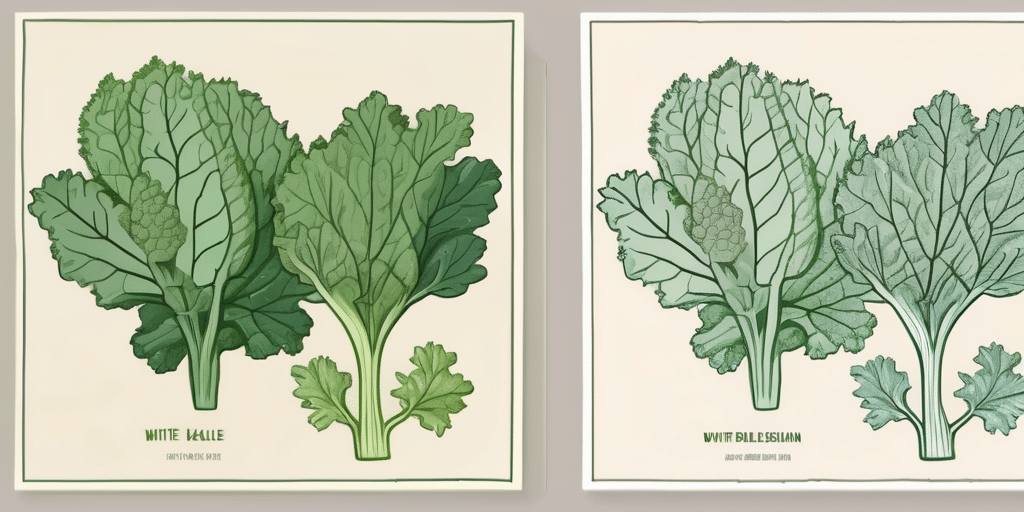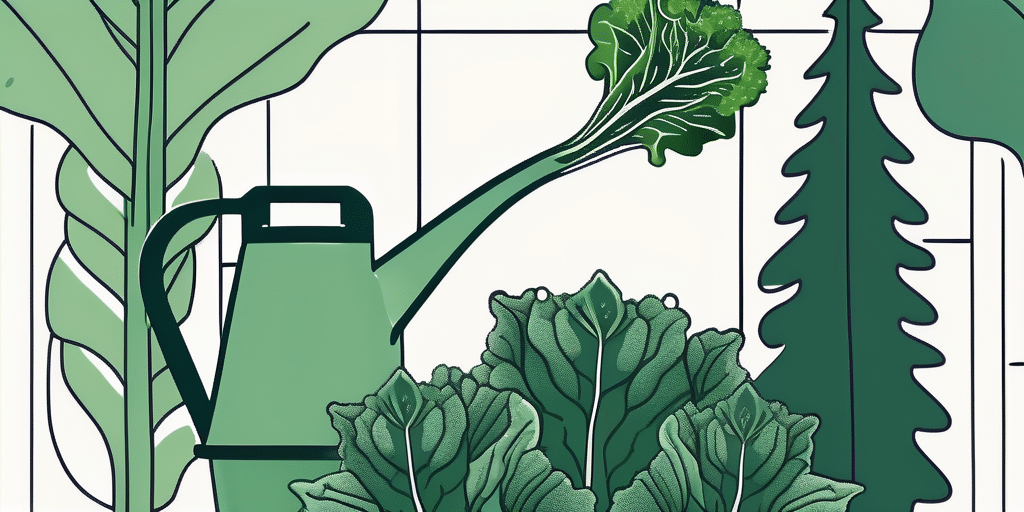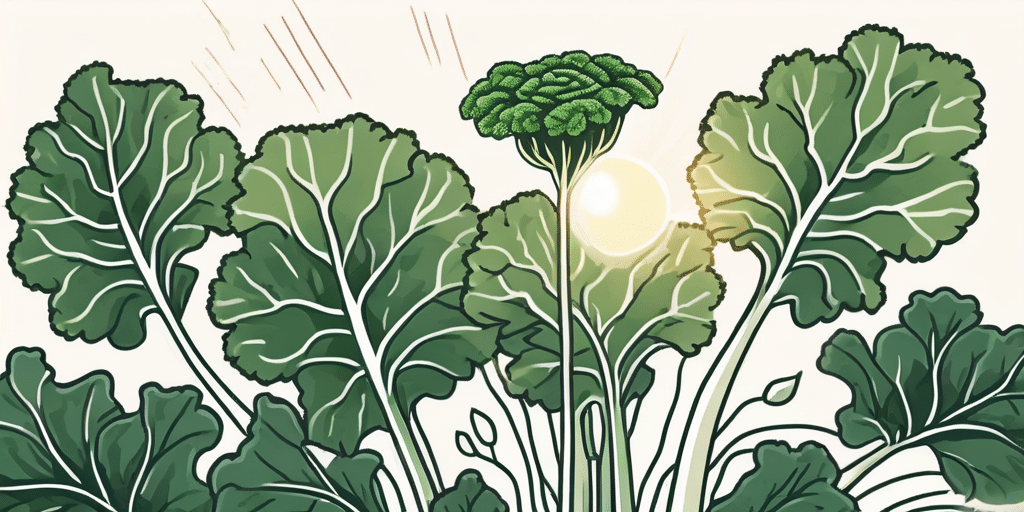Growing Winterbor Kale in Tennessee can be a rewarding experience. This versatile and nutritious vegetable thrives in the state’s climate, making it a popular choice for home gardeners. In this article, we will discuss when to plant Winterbor Kale in Tennessee and provide tips on how to grow it successfully.
Climate & Hardiness Zones in Tennessee
Before diving into the specifics of growing Winterbor Kale, it’s important to understand the climate and hardiness zones in Tennessee. The state has a diverse climate, with both mountainous regions and flatlands. The USDA Hardiness Zones in Tennessee range from 6a in the cooler mountainous areas to 8a in the warmer regions.
Tennessee’s climate is characterized by hot summers and mild winters, making it suitable for a wide variety of crops. The state experiences an average annual rainfall of around 50 inches, with the highest precipitation typically occurring in the eastern part of the state due to its proximity to the Appalachian Mountains. In terms of temperature, the average annual temperature in Tennessee is around 60°F, but this can vary significantly depending on the region.
Due to its diverse topography, Tennessee is home to a rich variety of plant species, including both native and cultivated plants. The state’s landscape ranges from the lush forests of the Great Smoky Mountains to the fertile agricultural lands of the Tennessee Valley. This diversity in ecosystems contributes to the different microclimates found throughout the state, influencing what can be grown successfully in each region. Understanding these climate and hardiness zone variations is essential for successful gardening and farming practices in Tennessee.
When to Plant Winterbor Kale in Tennessee
Timing is crucial when it comes to planting Winterbor Kale in Tennessee. The best time to start sowing seeds or transplanting seedlings is in early spring, around March or April. This is when the soil has warmed up, and the risk of frost has passed.
It’s worth noting that kale is a cool-season crop and can tolerate light frosts. In Tennessee, the cooler temperatures of spring and fall provide ideal conditions for its growth. However, summer’s scorching heat can cause the plant to bolt, so it’s best to avoid planting it during the hottest months.
When selecting a location for your Winterbor Kale in Tennessee, consider the soil quality and drainage. Kale thrives in well-drained soil rich in organic matter. If your soil is heavy or compacted, consider amending it with compost or well-aged manure to improve its fertility and drainage. This will provide a healthy foundation for your kale plants to grow and develop.
Tips for Planting Winterbor Kale in Tennessee:
- Choose a location that receives at least six hours of sunlight daily. Partial shade is also suitable.
- Prepare the soil by working in organic matter, such as compost or well-aged manure, to improve its fertility and drainage.
- Sow the seeds or transplant seedlings into well-drained soil that has been loosened to a depth of six to eight inches.
- Space the plants about 18 to 24 inches apart to allow room for growth.
- Water thoroughly after planting and maintain consistent moisture throughout the growing season. Avoid overwatering, as kale prefers moist, but not waterlogged, soil.
When to Harvest or Pick Winterbor Kale in Tennessee
Winterbor Kale, a cold-hardy variety known for its ability to withstand frost, thrives in the Tennessee climate, making it a popular choice for local gardeners looking to extend their growing season. This nutrient-dense leafy green not only adds beauty to your garden but also provides a bountiful harvest for your kitchen.
When it comes to harvesting Winterbor Kale in Tennessee, there are a few key strategies to consider to ensure you get the most out of your crop. Whether you prefer a continuous harvest or a single harvest, knowing the signs of readiness is crucial for optimal flavor and texture.
If you opt for a continuous harvest, you can start picking individual leaves as soon as they reach your desired size. By snipping the outer leaves at the base of the plant, you allow the inner leaves to keep growing, providing you with a steady supply of fresh kale throughout the season.
On the other hand, if you prefer to harvest the entire plant at once, the best time to do so is when the leaves are vibrant, crisp, and have reached a length of approximately 8 to 10 inches. This ensures that you capture the kale at its peak flavor and tenderness, perfect for various culinary uses.
Tips for Harvesting Winterbor Kale in Tennessee:
- Use sharp scissors or garden shears to cut the leaves or entire plant, ensuring a clean and precise harvest while avoiding unnecessary damage to the plant.
- Harvesting in the morning, when the kale leaves are at their freshest and most flavorful, can enhance the taste and quality of your harvest.
- Regularly inspect your kale plant and remove any damaged or yellowing leaves promptly. This practice not only promotes healthy growth but also helps prevent potential pest infestations, keeping your kale thriving throughout the season.
As you navigate the process of harvesting Winterbor Kale in Tennessee, remember that patience and attention to detail are key to a successful and rewarding harvest. By following these tips and observing the visual cues of your kale plant, you can enjoy a plentiful supply of this nutritious green leafy vegetable straight from your garden to your table.
Frequently Asked Questions
1. Can Winterbor Kale survive freezing temperatures in Tennessee?
Yes, Winterbor Kale is remarkably frost-tolerant and can survive freezing temperatures in Tennessee. Its hardiness allows for continued growth even during the colder months.
Winterbor Kale, also known as “borecole,” is a variety of kale that thrives in cooler climates. Its curly, bluish-green leaves not only withstand frost but actually become sweeter after exposure to cold temperatures, making it a popular choice for winter gardening in Tennessee.
2. What are the benefits of growing Winterbor Kale?
Winterbor Kale is packed with essential nutrients such as vitamins A, C, and K. It is also rich in antioxidants and fiber, making it a healthy addition to any diet.
Additionally, Winterbor Kale is known for its versatility in the kitchen. You can enjoy it raw in salads, sautéed as a side dish, or blended into smoothies for a nutrient boost. Its robust flavor adds depth to various dishes, making it a favorite among home cooks and chefs alike.
3. Can Winterbor Kale be grown in containers?
Yes, Winterbor Kale can be successfully grown in containers. Ensure the containers are at least 12 inches deep to allow for proper root development, and choose a well-draining potting mix.
Container gardening offers flexibility for urban gardeners or those with limited space. By planting Winterbor Kale in containers, you can easily move them to sunnier spots or protect them from harsh weather conditions. Just remember to provide adequate water and nutrients to support the plant’s growth.
4. Can I save seeds from Winterbor Kale for future planting?
Yes, you can save seeds from Winterbor Kale for future planting. Wait until the plant reaches maturity, and the seed pods turn brown and dry. Then, remove the pods, open them, and collect the seeds. Store them in a cool, dry place until you are ready to sow them.
Harvesting and saving seeds from Winterbor Kale not only allows you to continue growing this nutritious vegetable in your garden but also promotes seed saving and sustainability. By preserving the seeds of Winterbor Kale, you can ensure a steady supply of this hearty green for years to come.
By following these guidelines, you can enjoy a bountiful harvest of Winterbor Kale in Tennessee. Whether you add it to salads, soups, or smoothies, this versatile vegetable is sure to delight your taste buds while providing valuable nutrients.
Join Our Gardening Community
Ready to take your Winterbor Kale harvest to the next level? Subscribe for free to How to Grow Everything and learn how to build the garden of your dreams! Receive personalized gardening advice tailored to your Tennessee location, grow zone, and experience level. Enjoy the best gardening tips, special offers, and insights delivered directly to your inbox – no spam, just pure gardening gold. It’s 100% free, from our family to yours. Don’t miss out on our extensive library of free growing and gardening articles designed to help you succeed. Subscribe now and join a community passionate about gardening!






